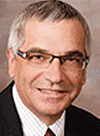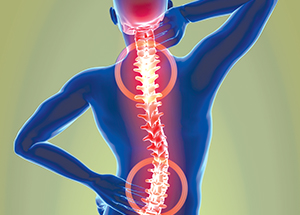Physical Therapy, Surgery Produce Same Results for Spinal Stenosis in Older Patients
Sufferers of pain caused by lumbar spinal stenosis, a back problem common with aging, gained symptomatic relief and improved functionality in equal numbers from surgery or physical therapy, according to a University of Pittsburgh-led study published in the Annals of Internal Medicine.
 It is the first study to compare outcomes between surgery and an evidence-based, standardized physical therapy approach for lumbar spinal stenosis. The condition occurs when the spinal canal narrows, placing pressure on nerve roots, and causing pain, numbness, and weakness through the back and lower extremities. Decompression surgery to remedy the condition has become the fastest-growing intervention in today’s older population.
It is the first study to compare outcomes between surgery and an evidence-based, standardized physical therapy approach for lumbar spinal stenosis. The condition occurs when the spinal canal narrows, placing pressure on nerve roots, and causing pain, numbness, and weakness through the back and lower extremities. Decompression surgery to remedy the condition has become the fastest-growing intervention in today’s older population.
The two-year study began with a total of 169 patients, aged 50 years and older, who were headed for decompression surgery but who agreed to be randomly assigned into two groups: those who would have the procedure, and those who went through two standardized physical therapy sessions a week for six weeks. After both groups were reexamined at intervals of six months, one year, and two years, the patient outcomes appeared to be equal. There were no detectable differences between the groups in how their pain abated and the degree to which function was restored in their backs, buttocks, and legs.
“Probably the biggest point for physicians, patients, and practitioners is: Patients don’t exhaust all of their nonsurgical options before they consent to surgery. And physical therapy is one of their nonsurgical options,” said principal investigator Anthony Delitto, chair of the Department of Physical Therapy, Pitt School of Health and Rehabilitation Sciences, as well as a member of Pitt’s Health Policy Institute and a consultant to UPMC.
Delitto, a physical therapist, and his colleagues have long puzzled over why some patients responded well to physical therapy and others to surgery.

“We wanted to really test the two approaches head to head,” he said. “Both groups improved, and they improved to the same degree. Now, embedded in that, there are patients who did well in surgery, and patients who failed in surgery. There are patients who did well in PT [physical therapy], and there are patients who failed with PT. But when we looked across the board at all of those groups, their success and failure rates were about the same.”
Delitto’s fellow Pitt and UPMC researchers included Deborah A. Josbeno and Sara R. Piva, School of Health and Rehabilitation Sciences; Stephen R. Wisniewski, Graduate School of Public Health; Mark Fye, UPMC Orthopaedic Surgery; and Carolinas Healthcare System’s Charity G. Moore, previously with the Pitt Department of Medicine.
Other Stories From This Issue
On the Freedom Road

Follow a group of Pitt students on the Returning to the Roots of Civil Rights bus tour, a nine-day, 2,300-mile journey crisscrossing five states.
Day 1: The Awakening
Day 2: Deep Impressions
Day 3: Music, Montgomery, and More
Day 4: Looking Back, Looking Forward
Day 5: Learning to Remember
Day 6: The Mountaintop
Day 7: Slavery and Beyond
Day 8: Lessons to Bring Home
Day 9: Final Lessons

